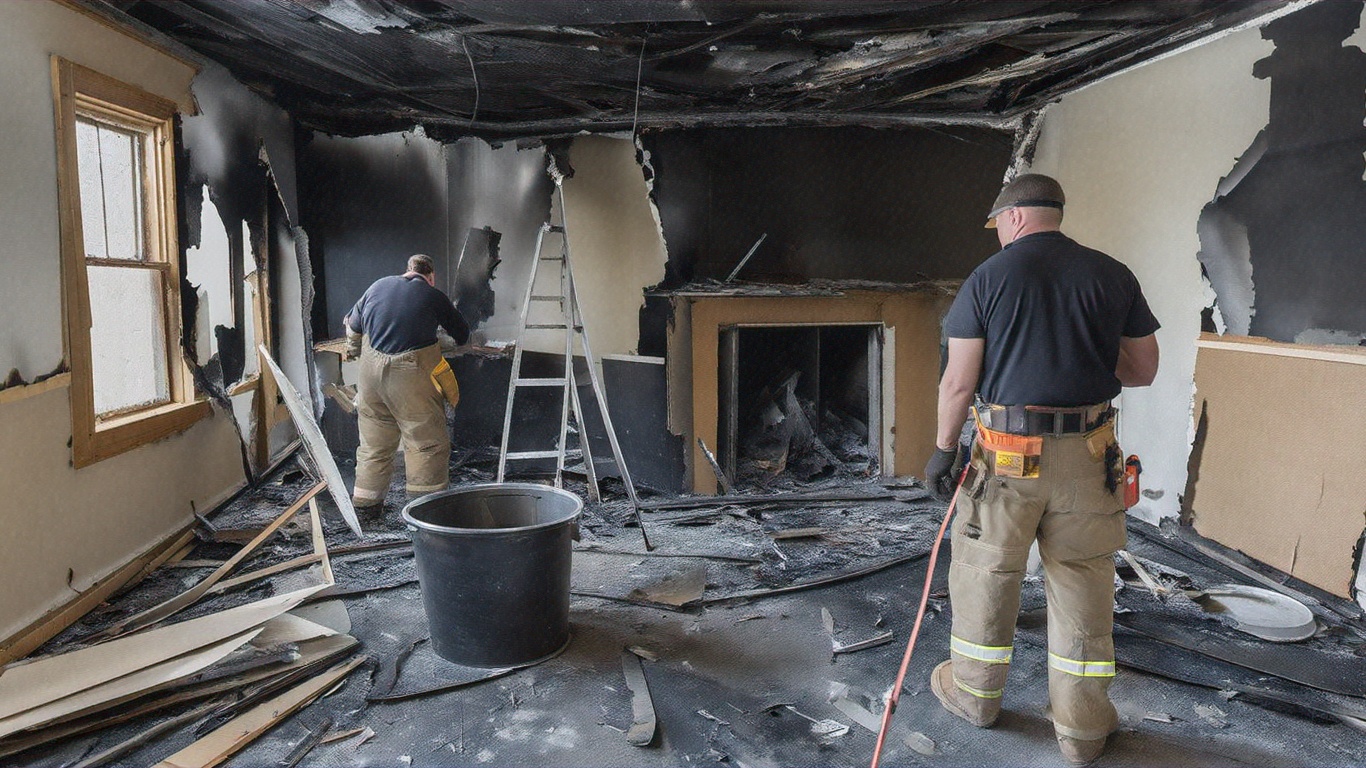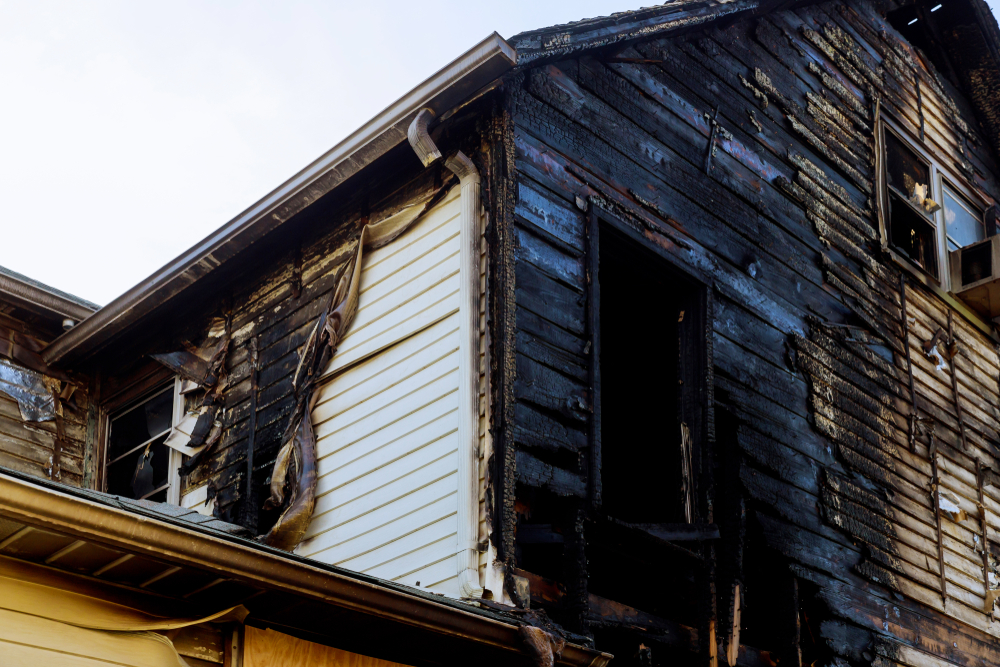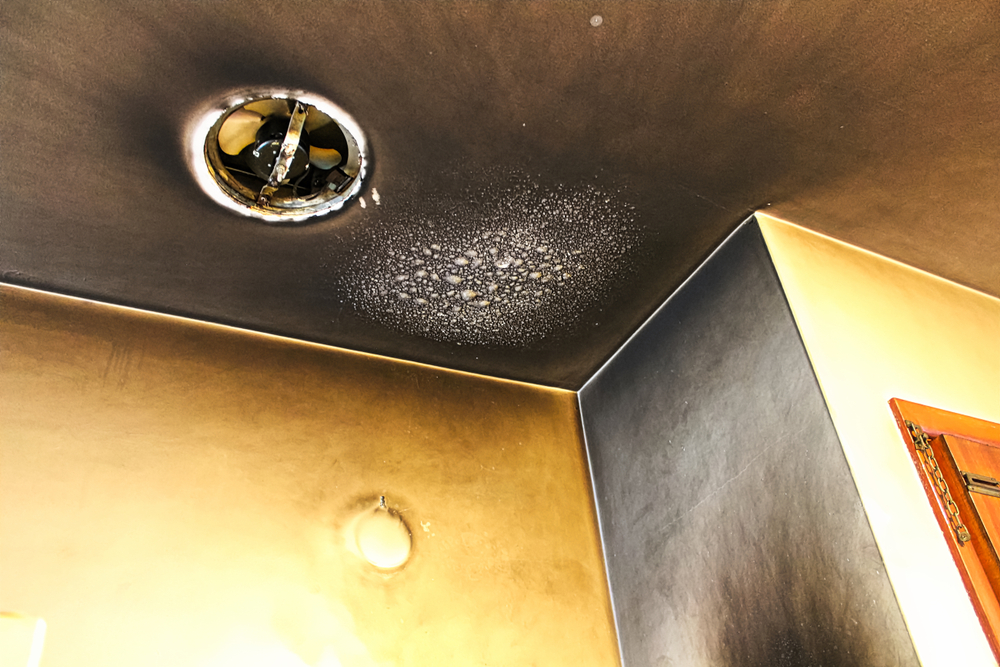Any size fire can cause damage that isn’t necessarily obvious right away. Even if the flames were contained fast, smoke, soot, and heat can compromise structural integrity, air quality, and electrical systems in your house. Ignoring these problems early on could result in expensive repairs, continuous health dangers, and maybe dangerous situations.
Many times, hidden fire damage shows up as chronic smoke smells, wall discoloration, compromised framework, or electrical issues. Knowing what to search for will enable you to respond fast to stop more degradation. The most often occurring indicators of hidden fire damage will be discussed in this book together with what to do should you believe any residual consequences exist. Maintaining knowledge will help you to safeguard your house, guarantee the safety of your family, and guide you in making required restoration and insurance claims.
Smoke and Soot Damage
- Subtle Odors: The residual smoke smell is among the most constant reminders of a fire. Walls, drapes, furniture, and carpets can all trap the scent even after washing. Though they may not be immediately prominent, these smells will become more apparent when the home is closed or when humidity levels change. A recurring burnt or bitter smell could point to trapped smoke particles needing expert deodorisation and extensive cleaning.
- Discoloration and Residue: Fine black or brown powder from incomplete combustion, soot can settle on surfaces far from the source of the fire. Look for a thin layer of dark residue on walls, ceilings, light fixtures, and furniture even if your house seems tidy. This residue could be sticky or oily and gets worse if not adequately eliminated. Sometimes, even in places free of direct flames, paint and wallpaper may seem yellowed or blackened. Left untreated, soot can permanently damage surfaces and compromise indoor air quality.
- HVAC System Contamination: Particles of smoke and soot can enter your HVAC system and disperse about the house via air vents. Black dust around vents, a continual smokey scent when the system runs, and poor indoor air quality indicate contamination. These particles can aggravate allergies or asthma as well as provide breathing hazards. Essential first actions to restore air purity and avoid long-term health problems are professional duct cleaning and filter replacement.

Electrical System Damage
- Damaged Wiring: Though the flames never touched an outlet or switch, the strong heat from a fire can melt or degrade electrical wire. Broken wires seriously increase the fire risk and could cause short circuits or electrical failures. Look for flickering lights, often tripped breakers, and very heated outlets. See an electrician right away if you find any of these problems in your house’s wiring.
- Appliance Malfunctions: Appliances may have experienced heat or smoke damage even if they appear to be working after a fire. Unusual noises, poor performance, or unanticipated shutdowns point to problems. Appliances that smell burnt when in use should be unplugged right away and safety checked. Before starting regular use, it is advisable to have all main electrical appliances inspected.
- Burnt Smells from Outlets and Switches: Should you find a residual burned scent next to switches, outlets, or electrical panels, this may point to concealed fire-related damage. Though invisible, damaged wiring might overheat and cause another fire. Never ignore electrical smells; to guarantee the safety of your house, have an electrician to check and fix any compromised circuits.
Structural Damage
- Warping and Cracking: A fire’s intense heat can distort, shatter, or weaken metal, drywall, and wood products. Warping might manifest as uneven flooring, doors that no longer close correctly, or misshapened window frames. Though initially small, cracks in ceilings and walls can sometimes point to structural deterioration. These modifications could endanger the stability of your house and call for expert evaluation and repairs.
- Weakened Framing: Roofing systems, support beams, and load-bearing walls can all be undermined by fire. Though it may not always be obvious, indicators of this damage could include tilted flooring, shifting door and window frames. Little structural changes can point to a major issue that might get worse with time. It is advised to have a professional house inspection to see whether concealed fire damage compromises the integrity of your house.
- Foundation Issues: The great heat of fire can cause building materials to expand and shrink quickly, resulting in foundation fissures. Furthermore, the big volumes of water required to put out a fire could seep into the ground and cause foundation shifting or erosion of the soil. Hidden fire damage may be the result of uneven flooring, fresh foundation fissures, doors and windows that stick, or other observations.

Water Damage from Firefighting Efforts
- Mold Growth: Water used to put out a fire commonly absorbs into floor, ceiling, and wall surfaces. Inadequate drying of this stored moisture might cause mold development. Mold could show up as black streaks on walls, ceilings, or corners. It can aggravate allergies, respiratory issues, and other health problems and smells mustily. Using dehumidifiers and promptly drying out impacted areas will help stop mold from spreading.
- Rotting Wood and Materials: Efforts at firefighting can cause too much moisture to compromise insulation, drywall, and lumber. This moisture over time can cause materials to decay, paint to flake, and structural components to fail. Look for soft areas in walls, collapsing flooring, or moist patches that linger long beyond cleansing. These indicators point to a need for more drying or repairs.
- Hidden Leaks: High-pressure water hoses used by firefighters might compromise piping, resulting in underfloor or wall leaks. Water stains, rising humidity, bloated walls, and shockingly high water bills point to a concealed leak. Should you suspect a leak, a plumber can find and address the issue before it gets worse using infrared cameras or moisture meters.
What to Do If You Suspect Hidden Fire Damage
- See a competent restoration company right away if you observe any indicators of hidden fire damage. These professionals can evaluate damage, do extensive inspections, and offer fixes to make your house secure once more. Modern tools allow certified fire restoration expert to find damage invisible to the uneducated eye.
- Speak with your insurance company. If your house has suffered fire damage, properly document everything before starting repairs. Save receipts for cleanup, snap pictures of impacted areas, and quickly file an insurance claim. Before authorizing coverage for repairs, your insurer could call for expert inspections.
- Never venture into locations that are structurally weak. If you believe there are structural or electrical concerns, steer clear of do-it-yourself fixes and instead call an expert. First and foremost should be ensuring safety.
Conclusion
Hidden fire damage could endanger your house’s value, stability, or safety. Early recognition of danger signals including smoke smells, electrical problems, structural instability, and water damage will help you to act quickly to stop more degradation. While documentation of the damage aids with insurance claims, using a professional fire restoration agency guarantees complete restorations.
Preventing long-term fire-related damage to your house calls for proactive upkeep and alertness. Should you suspect concealed damage, act fast to protect your family and house from possible hazards.
Philadelphia Restoration Services
https://www.google.com/maps?cid=3399342399556699153
+1 267 668 0013
https://philadelphiarestorationservices.com/


